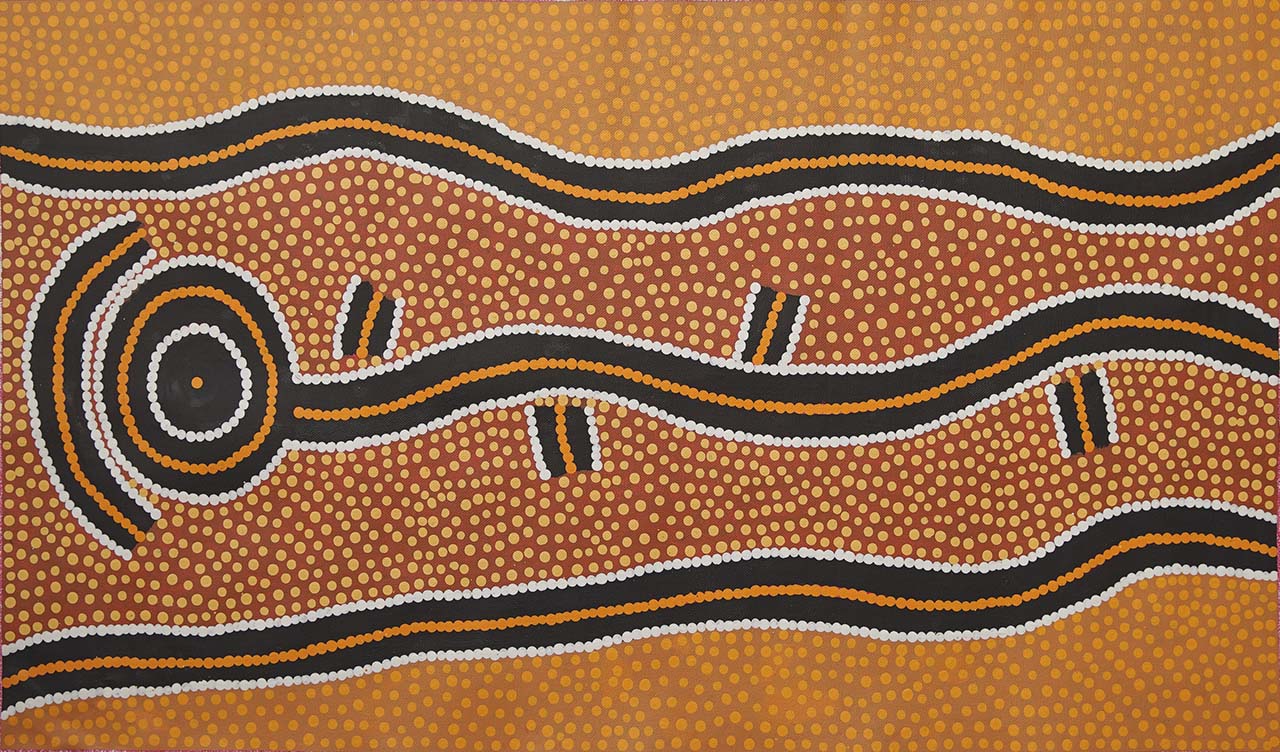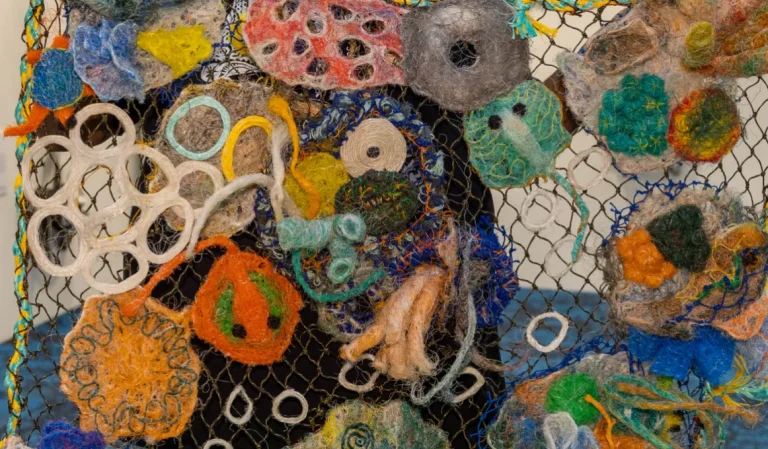Aboriginal Art from Different Regions of Australia
I. Introduction
A. Definition of Aboriginal Art
Aboriginal art encompasses the visual, performative, and material culture of Australia’s First Nations peoples, regarded as the oldest continuous artistic tradition in the world (Morphy, 1998). It includes rock engravings, bark paintings, sand drawings, weaving, sculpture, and contemporary forms such as acrylic painting on canvas.
B. Significance of Aboriginal Art in Australian Culture
The significance of Aboriginal art lies in its role as a cultural archive, preserving stories, laws, and spiritual knowledge through symbolic representation. It provides an enduring connection between people, Country, and ancestral beings from the Dreaming (Taylor, 2014). Today, it also serves as a medium for cultural revival, political expression, and intercultural dialogue.
C. Overview of the Diversity in Styles and Regions
Aboriginal art is not a homogenous tradition but a collection of highly diverse practices. Each region of Australia—ranging from the Central Desert to Arnhem Land and the Torres Strait Islands—has distinctive artistic styles, materials, and cultural purposes shaped by landscape, climate, and language group (Kleinert & Neale, 2000).
II. Historical Context
A. Origins of Aboriginal Art
Archaeological evidence indicates that Aboriginal art dates back over 60,000 years, with rock art sites such as those in Kakadu and the Kimberley among the oldest known in the world (Taçon et al., 1996). These artworks include hand stencils, animal figures, and geometric motifs, often with ceremonial or spiritual significance.
B. Evolution Through Different Periods
Art evolved from rock shelters and bark into portable mediums, particularly during the 20th century. The Papunya Tula movement of the early 1970s, where acrylic painting was introduced, marked a turning point in bringing Aboriginal art to global attention (Johnson, 1994).
C. Influence of Traditional Practices and Beliefs
Art has always functioned as a visual narrative system. Designs on bodies, sand, and ceremonial objects transmit sacred knowledge and affirm social identity. These practices continue to underpin contemporary art-making, ensuring cultural continuity (Morphy, 1991).
III. Regional Variations in Aboriginal Art
A. Northern Territory
-
Characteristics and Styles – Arnhem Land art is recognised for its rarrk (cross-hatching) and x-ray depictions of animals, while Central Desert art is dominated by dot paintings that encode Dreaming tracks (Taylor, 1996).
-
Notable Artists – Figures such as Rover Thomas and Emily Kame Kngwarreye transformed international perceptions of Aboriginal art through innovative adaptations of traditional forms (Isaacs, 1992).
-
Cultural Significance – These works remain integral to ceremonial obligations and the articulation of custodianship of Country.
B. Western Australia
-
Techniques and Materials – Kimberley art employs natural ochres and pigments, producing earthy and mineral-rich compositions (Mundine, 2010).
-
Climate and Landscape – The dramatic gorges, rivers, and escarpments inspire ancestral narratives depicted in paintings.
-
Art Centres – Waringarri Aboriginal Arts and Mangkaja Arts Resource Agency play central roles in sustaining practice and supporting community economies.
C. Queensland
-
Traditional vs Contemporary – Torres Strait Islander art emphasises marine motifs, carving, and textile work, while mainland Queensland art often blends traditional imagery with contemporary media (Neale, 2017).
-
Environmental Influence – Coral reefs, mangroves, and rainforest landscapes shape artistic symbolism.
-
Collaborations – Cross-cultural collaborations, such as projects supported by the Cairns Indigenous Art Fair, demonstrate innovation and inclusivity.
D. South Australia
-
Distinctive Patterns – The APY Lands are known for vibrant canvases mapping Dreaming tracks (tjukurpa) and Country (Croft, 2012).
-
Storytelling Role – Paintings act as cultural archives, encoding sacred geography.
-
Community Projects – Ernabella Arts, established in 1948, remains one of Australia’s oldest continuously operating Aboriginal art centres.
E. New South Wales and Victoria
-
Style and Medium – Historically, southeastern Aboriginal peoples produced carved trees (dendroglyphs), possum-skin cloaks, and rock engravings (Attenbrow, 2002).
-
Historical Influences – Colonisation disrupted practices, but revival movements have reinvigorated regional traditions.
-
Recognition and Support – Institutions like the Koorie Heritage Trust provide platforms for contemporary southeastern Aboriginal artists.
IV. Techniques and Materials
A. Traditional Tools and Mediums
Ochres, bark, feathers, stone, and plant fibres were integral to early art forms, each imbued with spiritual significance (Morphy, 1991).
B. Contemporary Adaptations
Since the 1970s, acrylics and canvas have expanded accessibility and market viability while preserving symbolic depth (Johnson, 1994).
C. Natural Materials
Many artists continue harvesting ochre and organic materials, ensuring their practice remains grounded in Country.
V. The Role of Aboriginal Art Today
A. Impact on Australian Society
Aboriginal art is now central to national identity, reconciliation discourse, and educational curricula (Altman, 2005).
B. Global Recognition
Works are held in major institutions such as the Musée du Quai Branly in Paris and the British Museum, affirming their global status.
C. Economic Contributions
Aboriginal art generates significant income, particularly in remote communities, through art centres, tourism, and exhibitions (Wright, 1999).
VI. Challenges Faced by Aboriginal Artists
A. Cultural Appropriation
Commercial misuse of Aboriginal designs threatens cultural integrity and undermines economic benefits for communities (Janke, 1999).
B. Preservation of Techniques
Intergenerational transfer of knowledge is essential, as younger artists balance tradition with contemporary innovation.
C. Access to Resources
Infrastructure, funding, and fair trade remain unevenly distributed across communities, limiting growth potential.
VII. Final words
Aboriginal art represents the world’s oldest continuous visual tradition, with profound cultural, historical, and economic significance. Regional diversity—from Arnhem Land’s cross-hatching to the APY Lands’ vibrant canvases—reflects a living and evolving heritage. Supporting Aboriginal artists ensures not only the survival of cultural practices but also their flourishing on the global stage.
VIII. References
-
Altman, J. (2005). Brokering Aboriginal Art: A Critical Perspective on Marketing, Institutions, and the State. UNSW Press.
-
Attenbrow, V. (2002). Sydney’s Aboriginal Past: Investigating the Archaeological and Historical Records. UNSW Press.
-
Croft, B. (2012). Culture Warriors: National Indigenous Art Triennial. National Gallery of Australia.
-
Isaacs, J. (1992). Aboriginality: Contemporary Aboriginal Painting and Sculpture. University of Queensland Press.
-
Janke, T. (1999). Our Culture: Our Future – Report on Australian Indigenous Cultural and Intellectual Property Rights. AIATSIS.
-
Johnson, V. (1994). The Art of Clifford Possum Tjapaltjarri. Gordon & Breach.
-
Kleinert, S., & Neale, M. (2000). The Oxford Companion to Aboriginal Art and Culture. Oxford University Press.
-
Morphy, H. (1991). Ancestral Connections: Art and an Aboriginal System of Knowledge. University of Chicago Press.
-
Morphy, H. (1998). Aboriginal Art. Phaidon.
-
Mundine, D. (2010). They Are Meditating: Bark Paintings from the MCA’s Arnott’s Collection. Museum of Contemporary Art.
-
Neale, M. (2017). Songlines: Tracking the Seven Sisters. National Museum of Australia Press.
-
Taçon, P. S. C., Wilson, M., & Chippindale, C. (1996). Birth of the Rainbow Serpent in Arnhem Land Rock Art and Oral History. Archaeology in Oceania, 31(3), 103–124.
-
Taylor, L. (1996). Seeing the Inside: Bark Painting in Western Arnhem Land. Clarendon Press.
-
Taylor, L. (2014). The Power of Knowledge, the Resonance of Tradition. Aboriginal Studies Press.
-
Wright, F. (1999). Papunya Tula: Genesis and Genius. Art Gallery of New South Wales.
- Water & Lightning Rain Dreaming by Long Jack Phillipus


